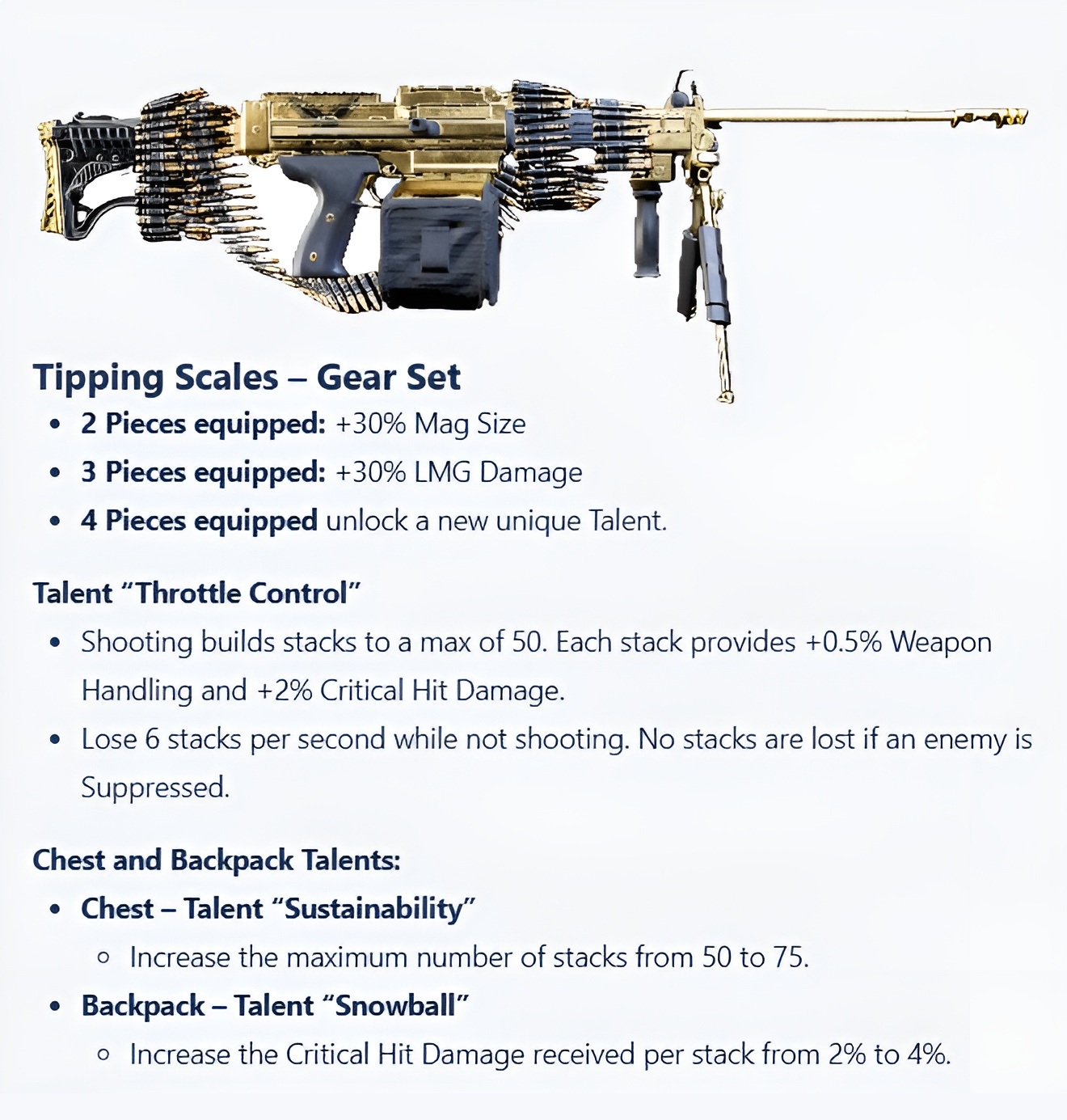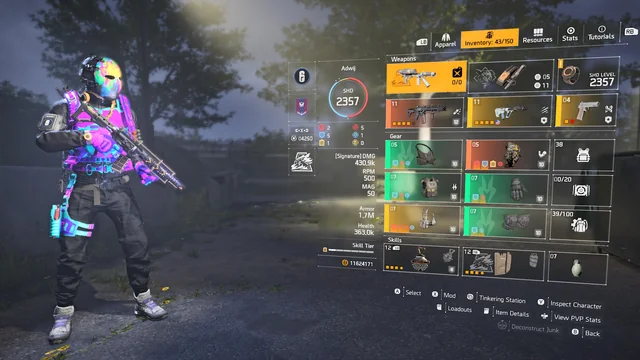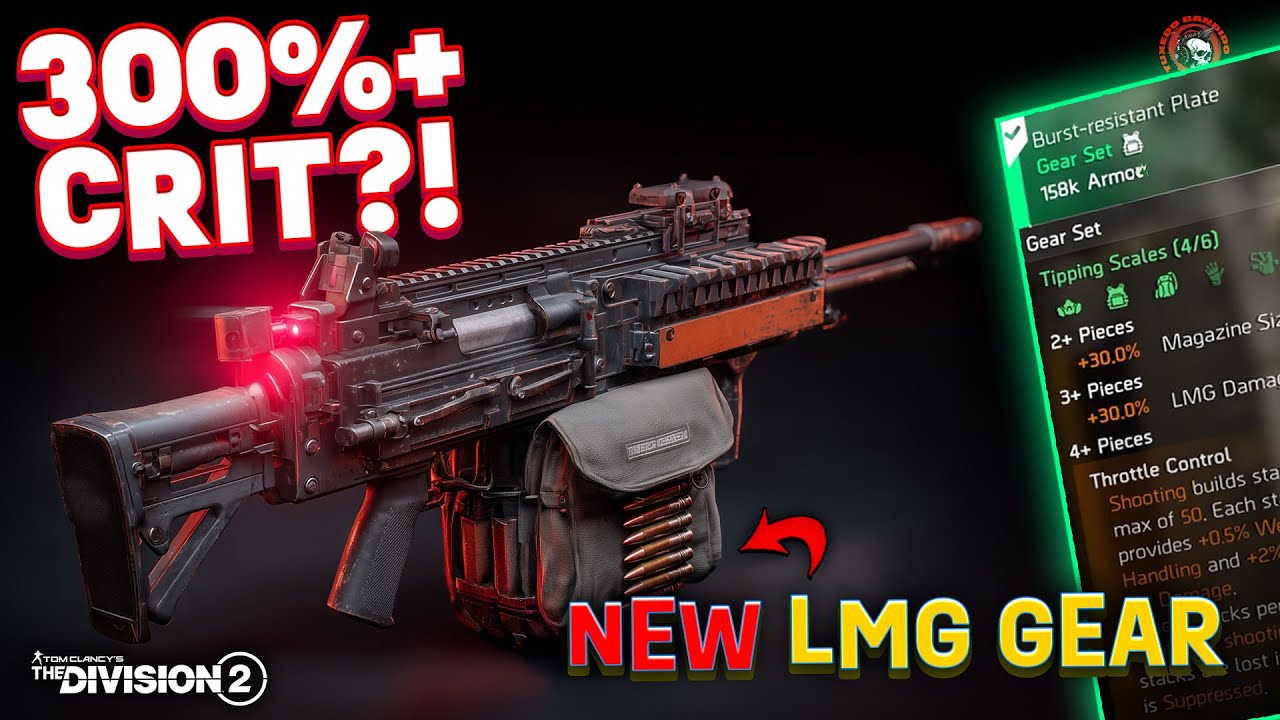Ubisoft is rolling out new updates for its hit looter-shooter RPG, and the Public Test Server (PTS) for Season 2 is giving players an early look at the Tipping Scales gear set.
Here’s everything you need to know—its perks, talent combos, and how it stacks up against top sets like Striker and Umbra. Let’s break it down.
What is Tipping Scales?
Tipping Scales is the newest gear set in The Division 2. It’s a strong set built for players who like using LMGs (Light Machine Guns) and dealing critical hit damage.
This gear set is very useful and focuses on stacking bonuses, giving players new ways to boost damage, improve weapon control, and increase magazine size.
Main Bonuses
The Tipping Scales gear set bonuses focus on LMG use and critical hit damage. Here’s what you get based on how many pieces you wear:
- 2 Pieces: Adds 30% magazine size.
This is a big and unique bonus that you don’t see much in other gear sets. It’s especially helpful for LMGs, which work better with bigger magazines.
- 3 Pieces: Gives 30% LMG damage.
This is a large bonus that ties the gear set to LMGs. While this forces you to use LMGs as your main weapon, the bonus is big enough to make it worth it.
- 4 Pieces: Unlocks the Throttle Control talent.
Throttle Control Talent: The Main Feature
The most important part of the Tipping Scales gear set is its 4-piece talent called Throttle Control.
This is where the gear set really shines, allowing you to build up damage and improve weapon control through a stacking system.
Here’s how it works:
Building Stacks: Shooting builds stacks up to 50 (or 75 with the chest piece).
What Each Stack Does:
- +0.5% weapon handling
- +2% critical hit damage
How Stacks Disappear: You lose 6 stacks per second when you’re not shooting. But you won’t lose any stacks if at least one enemy is pinned down by your fire.
This stacking system pushes players to be aggressive and keep shooting. The weapon handling bonuses help with stability, aim, and reload speed, while the critical hit damage stacking makes sure your build deals huge damage during long fights.
Chest and Backpack Talents: Sustainability and Snowball

The chest and backpack talents are very important for any gear set because they can greatly improve how well it works in combat. Tipping Scales offers these talents:
Chest Talent: Sustainability
The chest piece talent increases the stack limit of Throttle Control from 50 to 75. This means that at full stacks, you’ll have:
- 37.5% weapon handling
- 150% critical hit damage
This talent is perfect for players who can keep their stacks at maximum. The extra weapon handling bonuses really help LMG reload speeds, while the extra crit damage makes your shots even more powerful.
Backpack Talent: Snowball
The backpack talent doubles the critical hit damage bonus per stack from 2% to 4%. This means that at max stacks, critical hit damage jumps up to an amazing 300%!
Most people consider this one of the strongest backpack talents in the game. Snowball lets you push your damage to incredible levels.
When you combine it with the extra stacks from the chest piece, the teamwork between these talents becomes even clearer, making this a must-have for builds focused on critical hits.
How Good is Tipping Scales: Benefits & Drawbacks
Now that we know how Tipping Scales works, let’s look at its good and bad points to see how and where this gear set fits in the current game.
The Good: Why Choose Tipping Scales?
- Works Great with LMG Builds:
The mix of 30% bigger magazines, LMG damage boost, and better weapon control makes almost any LMG much stronger with this gear set. Weapons like the Military MK46 work especially well because of their 850 shots per minute, high damage, and how well they work with critical hit damage. - Huge Crit Damage:
With the ability to reach 300% critical hit damage, Tipping Scales gives you both quick bursts and steady damage that can match or beat other crit-focused gear sets like Umbra or Striker in certain situations. - Pinning Down Enemies Helps:
A smart feature of Throttle Control is that enemies you’ve pinned down stop your stacks from going away. Since LMGs naturally pin down enemies, this helps you keep your damage going strong in most fights. - Easy to Use:
Unlike Umbra, which needs you to use cover and time your attacks, Tipping Scales is simple. You just need to shoot enemies and keep attacking. - Can Use Different Weapons:
While the set works best with LMGs, the crit damage and weapon control bonuses work with any weapon. This flexibility is great for switching to an SMG or AR when you need to.
The Bad: Problems and Trade-Offs
- Losing Stacks:
Losing 6 stacks per second when you’re not shooting can be harsh, especially with LMGs’ long reload times. For example, with a normal reload time of 3.5 seconds, you’d lose 21 stacks just while reloading. You’ll need to rely heavily on weapon handling bonuses to help with this problem. - Not Much Protection:
Tipping Scales doesn’t have important survival features like getting armor back after kills or armor healing, which are crucial in long fights. Players need to build extra defensive stats to make up for this weakness. - Faces Tough Competition:
While strong, Tipping Scales has to compete with other great sets. Striker gives easy weapon control and faster firing bonuses, while Umbra is more flexible with its cover-based crit mechanics. - Depends on Pinning Enemies:
Even though the pinning mechanic helps slow down stack loss, it doesn’t always work. Very aggressive enemies or open areas may limit how often you can use this feature.
Comparing Striker, Umbra, and Tipping Scales

Striker vs. Tipping Scales
Striker Pros:
- Instantly grants a 15% boost to weapon handling and rate of fire without requiring stack buildup.
- Stacking consistency ensures steady damage output through both base stats and stack multipliers.
Which to Pick?
- Offers a unique 30% magazine size boost, which is especially valuable for LMG builds prone to slow reloads.
- Delivers higher critical hit damage scaling for sustained damage output.
Which One Should You Pick?
- Opt for Tipping Scales if you prioritize a larger magazine size and critical hit potential.
- Choose Striker if you prefer a faster-paced, more forgiving build with quicker handling.
Umbra vs. Tipping Scales
Umbra Pros:
- Its “Surge” mechanic makes it great for delivering burst damage and adapting to various playstyles.
- The rate-of-fire bonus applies to all weapon categories, adding flexibility.
Tipping Scales Pros:
- Easier to use, especially for players focused on LMG playstyles.
- Shines in sustained fights thanks to its emphasis on critical hit damage scaling.
Which One Should You Pick?
- Umbra is the right choice for burst-damage situations or if you rely on cover-based strategies.
- Tipping Scales stands out in long, drawn-out firefights, particularly with LMGs.
Tips for Building Around Tipping Scales
If you’ve decided to give Tipping Scales a go, here are some key tips to optimize your setup:
1. Choose the Right LMG
- The Military MK46 (850 RPM) is a standout choice thanks to its high base damage.
- Other great options include:
- Pestilence, for its synergy with the DoT effect.
- Fast Hands, which provides reload speed bonuses tied to critical hits.
2. Prioritize Weapon Handling
- Utilize the Fast Hands talent to accelerate reloads.
- Enhance your gear with sub-attributes such as reload speed and headshot damage for added efficiency.
3. Balance Offense and Defense
- Consider survivability perks to balance the offensively focused Tipping Scales set.
- Talents such as 20% armor on kill or bonus armor abilities can help sustain you during prolonged firefights.
4. Leverage Talent Synergies
- Killer: Boosts critical hit damage by 70% after a kill.
- Strained: Increases crit damage during sustained fire, making it a perfect fit with Tipping Scales’ stacking mechanics.
Final Impressions
The Tipping Scales gear set brings a fresh and competitive choice for LMG fans in The Division 2. Its mix of magazine size, critical hit damage, and weapon control makes it a damage powerhouse.
While it enters a busy field ruled by Striker and Umbra, what makes it special is its magazine capacity and long-fight potential.
That said, the stack loss and lack of defensive options create challenges that you must fix in your build.
Still, if you enjoy cutting down enemies with non-stop firepower, Tipping Scales might just become your new favorite.
So, what do you think?
Does this gear set belong in your build collection? Could it replace favorites like Striker or Umbra for you?
Let us know what you think, and until then, happy hunting!




